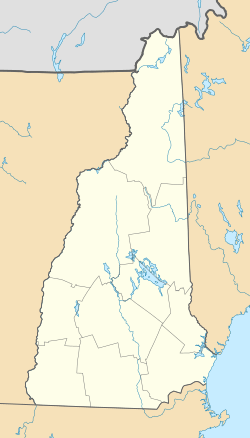Greenough Pond facts for kids
Quick facts for kids Greenough Pond |
|
|---|---|
| Location | Coos County, New Hampshire |
| Coordinates | 44°49′57″N 71°8′26″W / 44.83250°N 71.14056°W |
| Primary inflows | Greenough Brook |
| Primary outflows | Greenough Brook |
| Basin countries | United States |
| Max. length | 1.1 mi (1.8 km) |
| Max. width | 0.5 mi (0.80 km) |
| Surface area | 234 acres (0.9 km2) |
| Average depth | 38 ft (12 m) |
| Max. depth | 103 ft (31 m) |
| Surface elevation | 1,435 ft (437 m) |
| Settlements | Wentworth's Location |
Greenough Pond is a beautiful water body in northern New Hampshire, United States. It covers about 234-acre (0.9 km2) of land. This pond is located in Coos County, within the small area called Wentworth's Location.
Greenough Pond is an important part of the Androscoggin River watershed. A watershed is an area of land where all the water drains into a common river, lake, or ocean. For Greenough Pond, its water eventually flows into the Androscoggin River.
About Greenough Pond
Greenough Pond is a natural lake found in the scenic region of northern New Hampshire. It is known for its clear, cool waters. The pond is fed by and drains into Greenough Brook. This means the same brook brings water into the pond and carries it away.
Where is Greenough Pond?
The pond is located in Coos County, which is in the northern part of New Hampshire. It's specifically in the township of Wentworth's Location. This area is known for its natural beauty and outdoor activities.
What Lives in Greenough Pond?
Greenough Pond is classified as a coldwater fishery. This means its waters are cold enough to support certain types of fish that need cool temperatures to thrive.
Fish Species
You can find different kinds of fish in Greenough Pond. The main species observed here are:
- Brook trout: These are colorful fish often found in clear, cold streams and lakes. They are popular with anglers.
- Lake trout: These are larger trout that prefer deeper, colder waters. They are known for their size and can be a challenge to catch.
These fish species show that the pond's environment is healthy and suitable for coldwater aquatic life.



